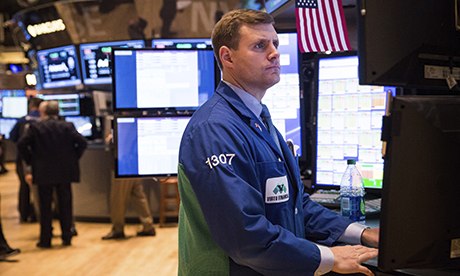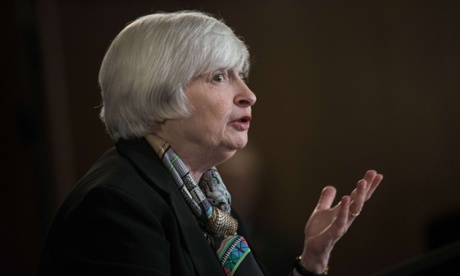Speculation that the Federal Reserve will begin winding down America's economic stimulus next month grew on Friday after the latest figures for jobs growth smashed expectations on Wall Street.
News that the world's biggest economy shrugged off the impact of the three-week government shutdown to create 204,000 new jobs stunned dealers and prompted anticipation that the US central bank will start tapering away its $85bn (£53bn) a month bond buying programme at its December meeting.
Financial markets had been braced for an increase of 120,000 in October non-farm payrolls amid concerns that the budget stand-off in Washington would have a knock-on impact across the wider economy.
But they revised forecasts that the Fed will wait until the spring before beginning the tapering process after the Bureau of Labour Statistics announced that an across-the-board increase in private sector jobs had swamped the effects of temporary layoffs of federal employees.
The BLS also revised up its estimates of employment growth in the previous two months by a total of 60,000, with August payrolls increased from 193,000 to 238,000 and September's from 148,000 to 163,000.
The Fed was widely expected to start winding down its quantitative easing programme in September but shelved the plans after growth prosepcts were damaged by an increase in long-term interest rates prompted by talk of a taper.
But the BLS data for the labour market coupled with data showing that the US economy expanded at an annual rate of 2.8% in the third quarter of 2013 means that a small monthly cut in the amount of bonds being bought will be on the central bank's agenda when it meets next month.
Shares on Wall Street rose in early trading, with some analysts saying that the Fed was still likely to adopt a wait-and-see approach given the probability that economic data during the period of the shutdown will be heavily revised. This feeling was strengthened by news that the regular snapshot of consumer confidence from Michigan University showed sentiment at its lowest level since late 2011.
Paul Ashworth, US analyst for Capital Economics, said: "The near three-week Federal government shutdown had little, if any, impact on payrolls. The strength in job creation was widespread. Manufacturing increased by a healthy 19,000, construction increased by 11,000 and retail increased by 44,000. Federal employment fell by a modest 12,000, because those workers affected by the shutdown received their back pay when they returned, which means they were counted as employed in the establishment survey.
"Overall, in our opinion, the data now justify the Fed reducing the pace of its asset purchases in December."
But Chris Williamson, of Markit, said the US labour market was less healthy than the big jump in payrolls suggested, pointing out that the rise in unemployment from 7.2% to 7.3% of the workforce showed "how the sluggish current pace of economic growth is failing to create enough new jobs to bring down the jobless total."
He added: "The employment data therefore adds to the sense that Fed policymakers will be in no rush to make any reduction to the current $85bn per month asset purchase programme, but that the risks are towards policy being reined in in due course. Most likely, however, the Fed will need to wait some time, possibly until after the health of the economy in the first quarter is ascertained, before making any firm decisions on any tapering. That could be as late as March."
The Fed has been using a twin-tracked approach to boosting the US economy since it went into a deep recession in 2008. Official interest rates have been slashed to close to zero while quantitative easing has flooded the banking system with new electronic cash.
But the recovery in the US economy and concerns that QE is leading to distortions in financial markets around the globe has resulted in some members of the Fed's policy making committee pressing for the programme to be wound down gradually. Wall Street believes that initially the bond-buying will only be reduced by $5-10bn a month, while the central bank has sought to reassure markets by stating that it currently has no plans to raise the cost of borrowing until unemployment comes down to 6.5%.











